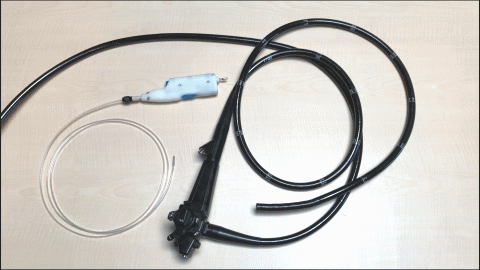
“This (the DD-Endo) will revolutionize interventional endoscopy.”
– Dr. Shai Friedland, Palo Alto VA & Stanford University
Flexible endoscopy is used in a broad range of gastrointestinal (GI) procedures. The GI tract includes one of the bodies most prominent natural tissue planes, formed by the mucosa/submucosa/muscularis. (The submucosa is loose connective tissue, while the mucosa and muscularis are both dense connective tissues).
Importantly, dissection of this tissue plane is the fundamental process of a procedure called “endoscopic submucosal dissection” (ESD). ESD allows endoscopists to remove large complex lesions “en bloc” (in one piece) allowing patients to avoid highly invasive colorectal surgery to remove a segment of the bowel.
ESD, however, is exceedingly difficult to perform because dissection is currently done by electrosurgery using a monopolar needle extending from the working channel of a nearly 2-meter-long flexible endoscope.
Control of this dangerous implement via an endoscope is notoriously difficult. Practitioners require extensive and lengthy training. Bowel perforation and electrocoagulation syndrome (electrical paralysis of the bowel’s smooth muscle) are common.
The Differential Dissector for flexible and rigid endoscopy (DD-Endo) promises to revolutionize ESD. The Differential Dissector works remarkably well in this natural tissue plane. Several examples are included in our endoscopy [videos]. Importantly, the DD-Endo self-guides and avoids trauma to perforators, making control of dissection simple, and the DD-Endo strongly resists passing through either the mucosa or the muscularis (plus it doesn’t use electricity), making it inherently safe.
The DD-Endo can be used for many procedures in addition to ESD, such as POEM, esophageal submucosal tunneling, and gastric dissections possibly extending beyond the pyloric sphincter and into the duodenum.
